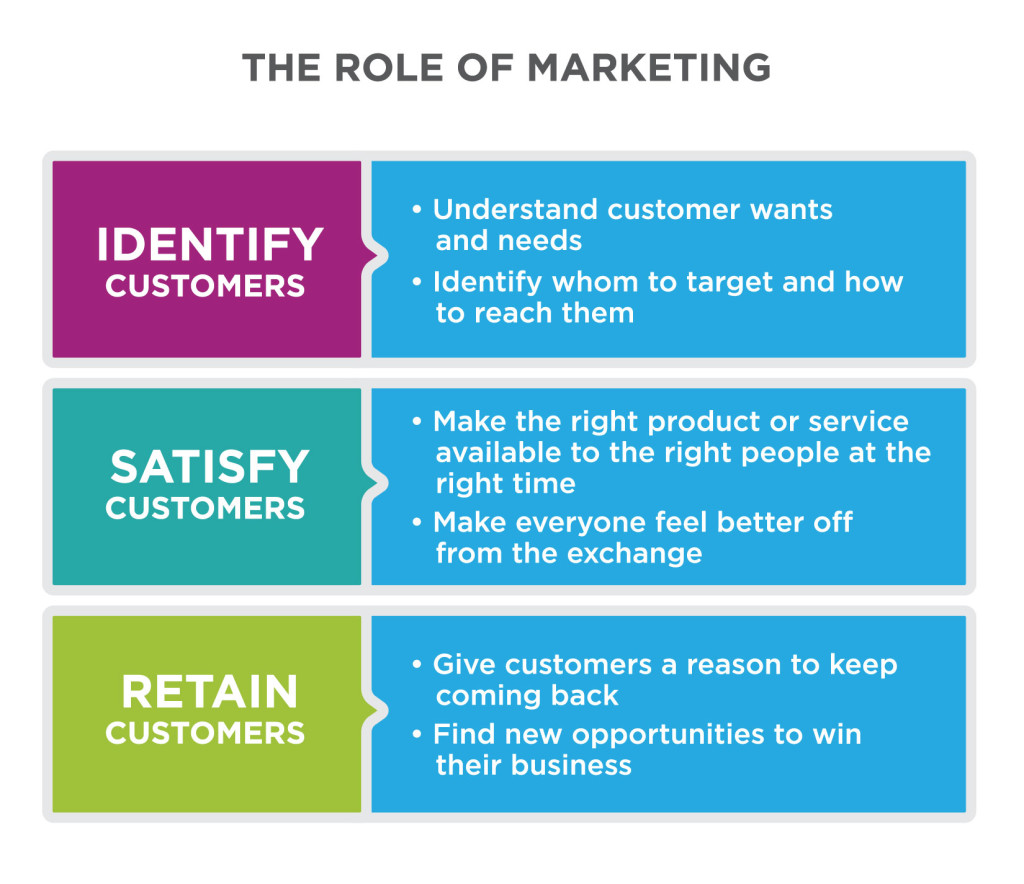Putting It Together: What Is Marketing?
Marketing is a powerful tool that serves a variety of functions for organizations, individuals, and society. Let’s take a moment to revisit some notable examples of marketing activity from earlier in the module. What’s happening to make each of these examples effective?
Marketing sells products.
Marketing informs organizations about what people want, and it informs people about products and services available to feed our wants and needs. From overt advertising to covert “recommendations” about things you might like based on other things you’ve purchased, marketing shows us different choices and tries to influence our buying behavior.
As you view its site, Amazon.com gleans information about you and what you’re shopping for. Then it suggests other products that might interest you: items similar to what you viewed, special deals, and items other people bought who were shopping for the same things as you. The genius of this technique is that it’s marketing masquerading as helpful information sharing.
Marketing changes how you think about things.
Effective marketing shapes people’s perceptions of the world around them, for better or for worse. Marketing can cause you to think differently about an issue, product, candidate, organization, or idea. When you are attuned to marketing forces and practices, you can exercise better judgment about the information you receive.
So, you think you know what big pharmaceutical companies are all about? With this ad below, using a strong dose of emotional appeal, Pfizer wants you to think again.
Marketing creates memorable experiences.
Some of the most imaginative marketing is not a message or an image. Instead it’s an entire experience that gives people a deepened understanding, enjoyment, or loyalty to whomever is providing the experience.
This IKEA event created a slumber party atmosphere for avid fans of the home furnishing store, inviting them to stay in the store overnight and live temporarily in the store display. It’s a great way to encourage people to interact more deeply with your product.
Marketing alters history.
Marketing has been known to unleash attitudes and forces that alter the course of history. Today, marketing plays a pronounced role in political campaigns, policy debates, and mobilizing citizen support for public affairs initiatives.
This 1984 ad for Ronald Reagan’s presidential campaign capitalized on widespread anxiety among Americans about national security during the Cold War. Some strategists credit this piece with shifting middle-of-the-road voters decidedly into the Reagan camp.
How does marketing affect you?
Pause for a moment to consider your immediate environment and your activities for the day. Where do you encounter evidence of marketing? How does it influence the choices you make? What impact does it have on your attitudes and perceptions? Why are various marketing activities effective or ineffective at reaching you as a customer or consumer?
Throughout the rest of the course, take this challenge:
See marketing, and learn.
COPYRIGHT
This courseware was assembled by Christopher VanOosterhout from a variety of resources copyrighted and openly licensed by multiple individuals and organizations. See our Copyright and Attribution page for additional details. For details about permission to use please contact me at c@vanosterhout.com with the phrase Courseware Usage Inquiry. If you believe that this courseware violates your copyright, please contact me at c@vanoosterhout.com with the phrase Copyright Inquiry in the subject. Details about the collector of these resources and Licentia LLC can be found at www.vanoosterhout.com
- Putting It Together: Marketing Role. Provided by: Lumen Learning. License: CC BY: Attribution
- People Start Pollution. Provided by: Ad Council. License: Other. License Terms: Fair use under United States copyright law
- IKEA Big Sleepover. Provided by: IKEA UK. License: All Rights Reserved. License Terms: Standard YouTube license
- Commercial – Reagan 1984 Election Ad (Bear in the woods). Authored by: jpspin2122. License: All Rights Reserved. License Terms: Standard YouTube License
- Best Commercial EVER!. Authored by: loveallaroundyou. License: All Rights Reserved. License Terms: Standard YouTube License
- Screen Shot of Amazon Unicorn Recommendations. Provided by: Amazon. License: All Rights Reserved. License Terms: Fair Use









 You’re walking down an urban street and, on impulse, you head into a trendy-looking clothing store. Right away, you pick out the obvious signs of marketing: shop signs, posters, window displays, sale notices, product displays, and brand names. Then come the less obvious, “environmental” things: the interior design, colors, aromas, the background music, announcer messages, the pricing structure, the way store clerks approach you–or leave you alone. All these details are part of a coordinated marketing strategy aimed at creating an ideal environment to separate you from your money. You may or may not be aware of how this is happening, but rest assured it is at work.
You’re walking down an urban street and, on impulse, you head into a trendy-looking clothing store. Right away, you pick out the obvious signs of marketing: shop signs, posters, window displays, sale notices, product displays, and brand names. Then come the less obvious, “environmental” things: the interior design, colors, aromas, the background music, announcer messages, the pricing structure, the way store clerks approach you–or leave you alone. All these details are part of a coordinated marketing strategy aimed at creating an ideal environment to separate you from your money. You may or may not be aware of how this is happening, but rest assured it is at work.


